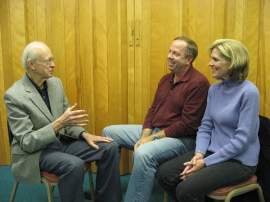For those who don’t read it regularly, Isis is an academic journal “devoted to the history of science and its cultural influences.” Isis has published some path-breaking work as well as some, well, path-clogging ones. My one, long-standing complaint is that Isis tends to be rather dull, best read with coffee, never before bed, always with a pencil. I don’t know if the dullness is the result of the writing, the editing, or some combination of both. I know and respect many of the Isis crew. (Full disclosure: I’ve served as an advisory editor to Isis since 2006). I like the decision to introduce a “Focus Section” for 3-4 short articles dealing with a particular topic. But there are times when reading Isis feels more like a chore than a pleasure.
So with this in mind, I am grateful to Will Thomas, historian of science, for profiling Isis articles on his blog Ether Wave Propaganda. In this pursuit, he has become my intellectual trainer, forcing me to get up and run through the articles before I have to lie down and smoke a cigarette. As always, I feel better for the effort.
I just finished reading Katherine Pandora and Karen Rader’s article “Science in the Everyday World” which considers the relationship between scientists and the general public. To summarize Pandora and Rader’s points: professional scientists have become closed off from the general public and its conceptions of science. As a result, these two communities do not engage each other very well, to the detriment of both. Historians of science used to side with professionals on this, seeing “real science” as stuff that happened in labs and research institutes, carried out by card-carrying scientists. As for the public, they received scientific information after the fact, in diluted form. In effect, this presented a “trickle-down theory” of science that posited doers (scientists) and receivers (everyone else). This is often called the “diffusionist theory” of scientific ideas.
In recent years, however, historians of science have begun to broaden their view of what constitutes science, now including ideas and activities that occur in the public sphere. As such, Pandora and Rader believe that historians of science are in an excellent position to help bridge the divide that has grown up between the scientific community and the public at large. Estranged by years of miscommunication, science and public can be brought back together, with historians of science acting as marriage counselors.
I had trouble with this article.
First, I think Pandora and Rader paint scientists with a pretty broad brush here. Overall, scientists come across as out of touch, oblivious and/or unconcerned about public reactions, viewing them at times as “childish, shallow, superficial, emotional, irrational, and subjective.” The solution? “Laboratory specialists could better communicate the key ideas of their research with their publics if they attended…carefully to the relationship between form and content in their public interventions.” Maybe this is the sense one gets reading Transactions in Physical Science, but I get a very different feeling about the views of scientists when reading science blogs. Consider, for example, the blog The World’s Fair, which is a collaboration of scientists and historians of science. Or science blogs such as The Beagle Project or Laelaps who are run by scientists committed to public engagement. When one looks at the network of scientists and humanities people who are citing each other and cross listing each other on blog rolls, it becomes harder to think of these groups as two balkanized communities.
Second, Pandora and Rader talk the talk of “two-way” science, but don’t walk the walk. They certainly challenge the diffusionist model of science, stating that scientists need to take the public seriously. But why? Not because it would influence the content of their scientific findings, but because scientists run the risk of alienating the public on which their work ultimately depends. Also, its their civic duty. “If scientists ignore the arguments to be found there [in popular culture], they exacerbate a sense of disenfranchisement on the part of the public in regards to science.” At no point do Pandora and Rader give examples of how the content of scientists’ work might affected by taking the public seriously. While the authors promote the idea of diologue and collaboration, it seems to stop short at shaping the content of science.
Finally, I think that the article is a little late out of the gate. Pandora and Rader give due credit to historians of Victorian science for figuring out that science in the public is significant. But the “big-tent” view of science is now widely shared and has spread far beyond Victorian studies. Thinking of the work being done by my science historian pals (in German biology, twentieth century space science, British geography, or my own field of exploration) I am hard pressed to think of projects that don’t consider the public as an active agent in the story of science.
Jogging finished. Time to lie down.















Thanks for the mention, especially in this context!